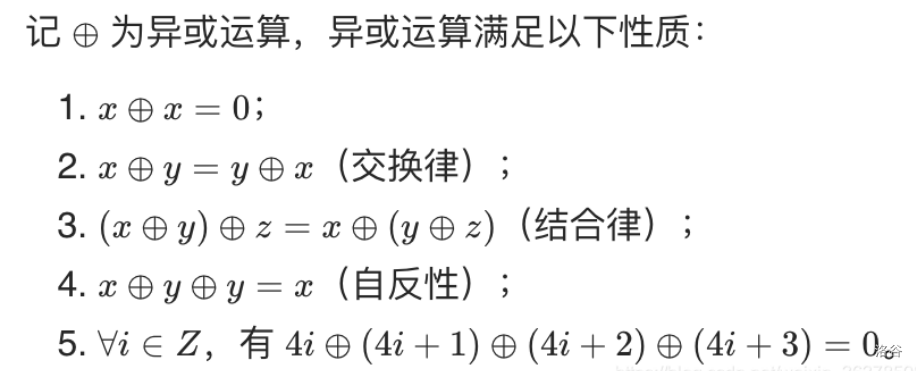
分析:
不难发现首先我们找到二进制最大的为1的那个数maxx 我们得到的答案起码最高位是1
然后如果想要答案最大 就想尽可能使得后面为0的均为1 发现 maxx-1 就是后面位均为1
这样两者异或一定是最大的
但是可能[L,R]没有将两者包括 也就是说区间最高位都是1 那这样怎么办?
这时候发现无论我们怎么选两个数 得到的答案最高位一定是0 如果这样的话可以就不用考虑最高位就行 依次递归就好
#include<cstdio>
#include<iostream>
#define LL long long
using namespace std;
LL bitcnt(LL x){ //返回x的二进制位数
LL cnt=0;
while(x)cnt++,x>>=1;
return cnt;
}
LL solve(LL l,LL r){
LL a=bitcnt(l),b=bitcnt(r);
if(a!=b) return (1LL<<b)-1; //位数相同
LL ans= solve(l&((1LL<<(a-1))-1),r&(((1LL<<(b-1)))-1));
//位数不同,抹去最高位
return ans;
}
int main(){
LL a,b;
cin>>a>>b;
cout<<solve(a,b);
}


这个题数据开到非常大都可以
首先我们可以打表找规律 发现除去第一个数 剩下的就是每四个一轮回 并且这四个一轮回的第1和第3个数是确定的
这样就好办了
点击查看代码
#include<bits/stdc++.h>
using namespace std;
#define lowbit(x) x&(-x)
#define ll long long
int main(){
int n,start;
cin>>n>>start;
if(n==1){
cout<<start<<endl;
return 0;
}
n--;
int a1=start^(start+2);
int a2=start^(start+2)^(start+4)^(start+6);
int t=n%4;
if(t==3)cout<<a2<<endl;
else if(t==1)cout<<a1<<endl;
else if(t==2)cout<<(a1^(n*2+start))<<endl;
else if(t==0)cout<<(a2^(n*2+start))<<endl;
return 0;
}